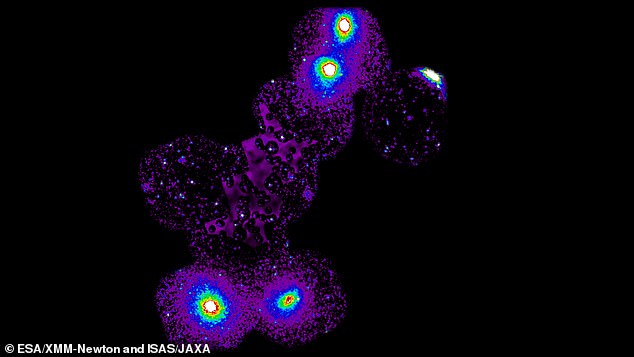
Scientists Unveil Universe’s Missing Matter in 10 Million-Degree Filaments, Resolving a Cosmic Mystery
Scientists Discover Universe’s ‘Missing Matter’ in Massive Cosmic Filament
After a decade-long search, astronomers have located the universe’s elusive "missing matter" within a colossal gas filament spanning 23 million light-years.
For years, cosmological models indicated that only a third of the universe’s expected normal matter—the substance making up stars, planets, and galaxies—had been observed. The rest remained undetected, puzzling scientists. Now, the European Space Agency (ESA) announced a breakthrough: the missing matter likely resides in a scorching-hot gas thread weaving through the Shapley Supercluster, one of the universe’s largest structures.

This filament, glowing at 10 million degrees Celsius, connects four galaxy clusters, each teeming with billions of stars.
Solving the Cosmic Mystery
The thread, invisible to the naked eye, spans over 23 million light-years—equivalent to crossing the Milky Way 230 times. Gas within it collapses under gravity, generating intense heat. However, its faint X-ray emissions were previously drowned out by brighter sources like supermassive black holes.
"Detecting this gas is like spotting a candle next to 10 flashlights 100 meters away," said lead researcher Dr. Konstantinos Migkas. Using ESA’s XMM-Newton and JAXA’s Suzaku telescopes, astronomers isolated the gas’s emissions from background noise for the first time.
Confirming the Cosmic Web
The findings, published in Astronomy & Astrophysics, confirm predictions about the universe’s structure. Cosmologists propose that galaxies and clusters are linked by a "cosmic web" of filaments. This discovery supports the idea that missing matter hides within these threads.
"Simulations predicted filaments with specific gas density and temperature. Our observations match perfectly," said Dr. Migkas.

The Shapley Supercluster’s filament stretches diagonally from Earth, containing 10 times the Milky Way’s mass.
Why Does Missing Matter Matter?
Normal matter accounts for just 5% of the universe’s content, with dark matter and dark energy making up the rest. Yet, until now, 70% of ordinary matter was unaccounted for. If undetected, it would challenge fundamental cosmic models. Filaments, long hypothesized as matter reservoirs, now provide answers.
The Role of Telescopes
XMM-Newton pinpointed contaminating X-rays from black holes, while Suzaku mapped the faint gas emissions. "We stripped away the noise, leaving only the filament’s signal," explained co-author Dr. Florian Pacaud.

Advanced telescopes revealed the gas filament’s properties, aligning with cosmic structure theories.
Implications for the Cosmic Web
This discovery underscores that galaxy clusters are interconnected across vast distances via filaments, forming the cosmic web’s backbone. Understanding these threads helps explain how matter clumped together post-Big Bang, shaping today’s universe.
What’s Next?
Scientists aim to study more filaments to confirm if they universally contain missing matter. While dark matter remains elusive, this breakthrough validates models of ordinary matter’s role in the cosmic tapestry.
In essence, the universe’s hidden architecture is coming into focus—one fiery filament at a time.


